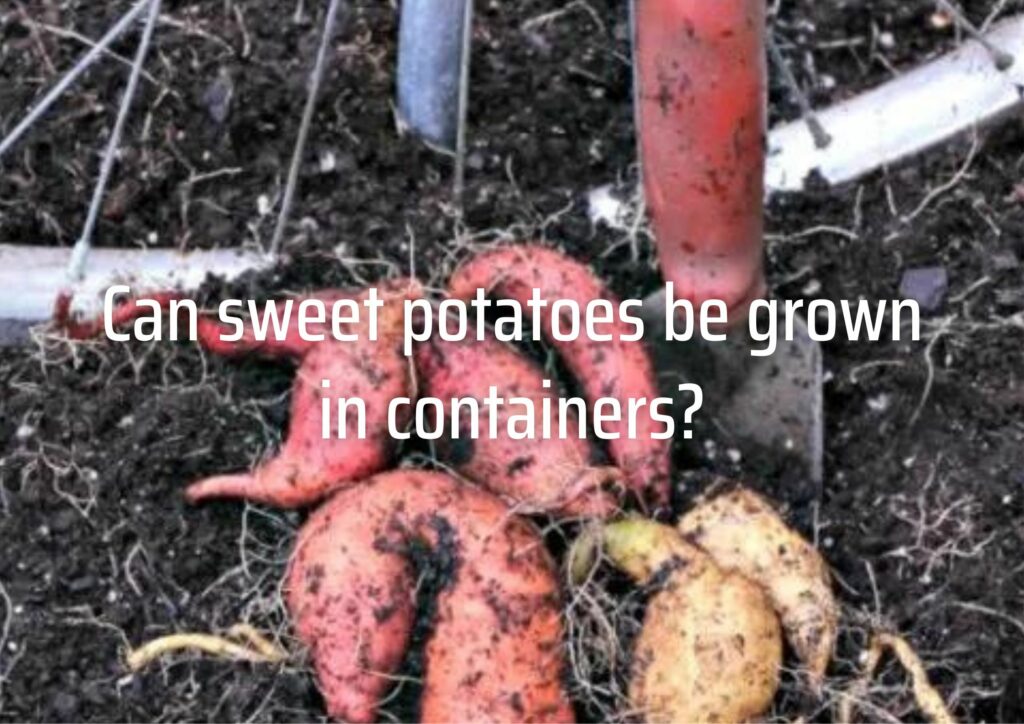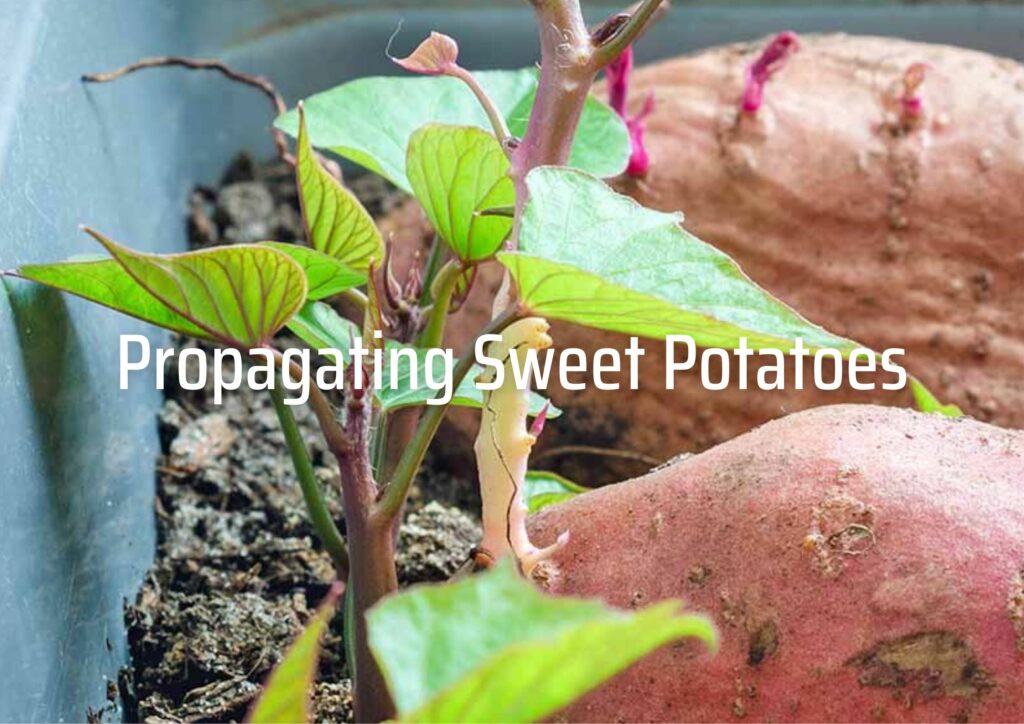How to Grow Sweet Potatoes – What is the best way to grow sweet potatoes?

You can easily find the perfect spot for this food with a few tips and tricks. Sweet potatoes are a great crop for gardeners looking to grow food. Sweet potatoes look great in the garden and can be kept for up to one year if they are stored properly. Sweet potatoes can be used in a variety of dishes, including sweet potato fries and baked sweet potato recipes.
It takes patience to grow them, as they mature in about four months. They are worth the wait. Learn how to grow sweet potato plants in your garden.
Sweet Potato Characteristics
- Sweet potatoes are rich in vitamins A, and C, potassium, calcium, and fiber. The amazing vine is believed to have been grown in Peru from 750 B.C. Some archaeological records suggest that it was used as a food source between 2500 B.C. and 1850 B.C. This beautiful vine is easy to grow and looks great in the garden if you have enough space.
- Contrary to popular belief the sweet potato and yam plants are completely different. Both are harvested for their tubers or roots. The tubers are also different. The yam ( Dioscorea species) tuber is a tropical vine that is native to Africa, Asia, and the Caribbean. It is slightly sweeter than sweet potatoes and has dark brown skin or rough brown with purple, red, or white flesh.
- Sweet potato ( Ipomoea Batatas), is a distant relative to the morning glory. It even produces beautiful purple flowers that look almost like morning glory. The skin of sweet potato tubers can be yellow, pale, deep orange, or red. However, the flesh is usually deep purple. Orange varieties are the most popular.
- The sweet potato vine is grown ornamentally because it is so attractive. Because of its attractive trailing qualities and decorative foliage, it is very popular in window boxes and hanging baskets.
Sweet Potato Varieties

- Centennial This sweet potato is the most popular in the United States. It has bright orange flesh and coppery orange skin. It can mature in as little as 90 days so it’s great for northern gardens.
- The Jewel: This sweet potato has been named for its crown jewel. It is a large producer and was bred to resist disease. They mature between 115 and 130 days and have coppery skin and bright orange flesh.
- Garnet – This sweet potato matures in 110-days. It has red skin and orange flesh, which stays orange even after baking.
- Georgia Jet – This variety is great for shorter growing seasons as it matures in just 90 days. It is orange-colored with red skin and can grow to more than 3 feet in length.
- Beauregard – This sweet potato is rich in yellow and resistant to disease. The vines can grow up to 6 feet in length.
- Porto Rico – This bunching sweet potato or bush sweet potato is great for smaller gardens or containers. It bears fruit that matures between 90 and 110 days. It is paler than Beauregard’s flesh.
- Okinawan – A Japanese heirloom sweet potato. It is pale outside and its light purple flesh becomes a deep purple once cooked. These sweet potatoes are high in antioxidants and take 120 to 180 days for them to mature. They grow best in warm climates.
- Pumpkin Yam – This is an heirloom sweet potato that’s not a yam and produces large tubers with bright orange flesh and orange skin. It matures between 90 and 120 days.
Planting Sweet Potatoes – What month do you plant sweet potatoes?
This beautiful plant can be placed in a vegetable yard. However, they require plenty of space to spread. While bushing sweet potatoes are smaller, some vining sweet potato varieties can grow to 6 feet.
- The warmest months are when sweet potato season occurs. Plant slips are sweet potato sprouts that have been grown from other sweet potatoes. They can be planted in the late spring, three to four weeks after the last Spring frost.
- The soil temperature should be at least 65 degrees Fahrenheit and the overnight temperatures not be below 55 degrees.
- Gardeners living in high-altitude areas or northern climates may find this difficult. It might be easier to plant a variety with a shorter harvest period than the 90- to 100-day varieties.
Do sweet potato plants need full sun?

- Sweet potatoes should only be grown in sunny areas that receive 8-10 hours of sunshine per day.
- They need a well-draining loamy soil. Good loamy soil has excellent drainage and a balanced amount of clay, silt, and sand. This is ideal for sweet potatoes who love moist soil but are not soggy.
- It might be a better idea to plant sweet potato slips in raised beds or raised rows in your charming potato garden if the soil is heavy. This will keep the soil warmer.
How can you plant sweet potatoes? Can I just plant a whole sweet potato?
Because sweet potatoes are temperature-sensitive, they should ideally be planted on an overcast day with temperatures between 60 and 75 degrees Fahrenheit. After following these sweet potato planting instructions, if the soil has not been enriched with low nitrogen, high phosphorous fertilizer, you can use an equivalent liquid fertilizer.
Before planting sweet potato slips, enrich the soil with a low-nitrogen fertilizer.
To keep your slips warm, make raised rows or mounds. They should be at least 8 inches deep, and 12 inches maximum.
- Place rows or mounds 3 feet apart.
- Take off the lower leaves from the slips so that only the top leaves are left.
- Place sweet potato slips 12 inches apart for optimal spacing
- Cover the roots as well as the stem to the top.
- Drink plenty of water for up to a week.
Can sweet potatoes be grown in containers?

It is possible to grow sweet potatoes in containers.
Porto Rico is a bush sweet potato variety that requires less space. It grows shorter vines and so it’s better to start with this variety. It should be able to drain well. Some gardeners use fabric containers to grow potatoes. These containers provide a lot of oxygen to the roots.
Container-grown sweet potatoes should be kept in full sunlight. Make sure that the soil is evenly moist. However, plants should not be allowed to sit in water.
Watering Sweet Potatoes – How often do you water sweet potatoes?
Sweet potatoes require regular water but can tolerate dry soil once they are established. After planting slips, they need to be watered regularly until they are established. Sweet potatoes need about 1 inch of water each week once they are established. This depends on the weather.
To ensure that the sweet potato plants dry out during the day, water them in the morning or evening. In the last three to four weeks before sweet potato harvesting, you should stop watering. Tubers can split if they are not watered properly.
Fertilizing Sweet Potatoes
The best fertilizer to fertilize potatoes also works well for sweet potatoes. A low-nitrogen, high-phosphorous fertilizer (5-10-10) is the best way to fertilize sweet potatoes.
Some gardeners prefer to apply a liquid fertilizer or water-soluble fertilizer right before planting and every 4 to 6 weeks throughout the growing season. You should stop fertilizing near harvest, just like you do with watering.
Pruning Sweet Potatoes – How do you prune a sweet potato vine?
Sweet potato vines should not be pruned at all. The leaves provide nutrition for the tubers and help to produce a strong harvest. You can train the vines onto a tree or back into your garden bed if they become unruly.
Propagating Sweet Potatoes – Can I grow sweet potato from sweet potato?

Slips are sprouts that have been grown from sweet potatoes. These slips can be used to propagate sweet potatoes. Slips can be purchased at a garden center during the planting season or ordered online. Sweet potatoes mature in 100 days on average and need soil temperatures of 65 degrees Fahrenheit to mature. This is why buyers should be aware when placing online orders.
Healthy sweet potatoes can also be used to make slips. This is a cost-effective method that can yield around 50 slip sprouts. It is very easy to propagate sweet potatoes from healthy sweet potatoes.
- Clean the sweet potatoes.
- You can cut them in half, or if they’re large, in quarters.
- You should fill a jar with enough water to allow the sweet potato sections to be suspended in the water.
- To keep the section in its place, use toothpicks. This is similar to suspending an avocado pit inside a jar.
- Place the jars in an area that is bright and warm.
- To separate the sweet potatoes from the water, drain them once they are covered with sprouts.
- Each small sprout should be carefully removed from the sweet potato.
- Place the slips in a shallow water pan with a portion of the stem in the water, and the leaves unsuspended. Over time, roots should begin to emerge.
- Make sure to keep the water clean. Before planting, wait until the roots reach at least 1 inch in length.
Potential Diseases and Pests
Sweet potatoes are susceptible to many fungi or pests. Rotating your crops is the best way to prevent this. Sweet potatoes should not be planted in the same spot year after year as fungi can spread in the soil. Make sure you choose disease-resistant varieties and only buy slips from a reputable grower.
Sweet potatoes can be sprayed by whiteflies and wireworms. Many common fungi can cause more problems than insects. The most prevalent sweet potato fungal diseases are fusarium, sweet potato curves, stem and root rot, white rust, sweet potato scurf, black rot, and sweet potato scurf. The only option is to kill infected plants.
Harvesting Sweet Potatoes – How can you tell when sweet potatoes are ready to harvest?

It can be very satisfying to harvest sweet potato roots. When the soil is loose enough, the sweet potato vine will pull up easily and reveal a string of sweet potatoes. After harvest, don’t scrub the potatoes. Just shake off any remaining dirt and brush it off. You should wait until you’re ready to eat the potato before washing it. The moisture will reduce its shelf life.
When is sweet potato harvest best?
Sweet potatoes should be harvested before the temperature drops below 50 degrees Fahrenheit. Sweet potatoes are warm-season vegetables that can grow up to frost death of the vines. They should be harvested as soon as possible. They will rot if the roots are left in the ground for too long after the cold temperatures have passed.
How to harvest sweet potatoes?
Sweet potatoes can be harvested once they are big enough to eat. However, sweet potatoes will not be ready for harvest until the leaves and vines turn yellow. It takes around 100 days to harvest sweet potatoes, but it will vary depending on the variety.
- Dig at least one foot around the plant and at least six inches deep.
- Reduce some of the sweet potato vine but not the primary crown.
- To loosen the roots, carefully pull the crown of the plant up.
- Fresh sweet potato roots bruise easily so make sure to remove as much soil as you need to make it easier for the roots to be pulled out.
- Take care to remove any dirt.
How can you cure sweet potatoes? Do sweet potatoes need to cure before eating?

To help sweet potato tubers harden, you should cure them before storing them. They will develop a second skin, which will protect them from cuts and bruises. Finding a cure is the challenge.
- For 2 weeks, store the tubers in a warm area with high humidity. For sweet potatoes, keep them at 80°F with 90% humidity. A greenhouse outside or a table in the shade may work.
- Arrange sweet potatoes so that they don’t touch.
- Before storing, discard any sweet potatoes that are bruised.
How can you store sweet potatoes?
Sweet potatoes should be kept in cool, dry, and dark areas. If the temperature is not too high, place them in a basket or wooden box in the back of your pantry. Avoid storing them in the fridge. They will spoil quickly if they are exposed to moisture and cold air. Gardeners wrap sweet potatoes in newspaper before placing them in a wooden container.
You can freeze sweet potatoes and keep them in the freezer for up to one year. You must peel, boil, and cook the sweet potatoes completely before freezing. To preserve the color of the sweet potatoes, slice them and then place them in freezer-safe containers.
Sweet potato tubers are safe for pets but the sweet potato vine is poisonous to cats. Dogs should not eat unripe sweet potatoes. However, they can consume cooked sweet potatoes in moderation.
